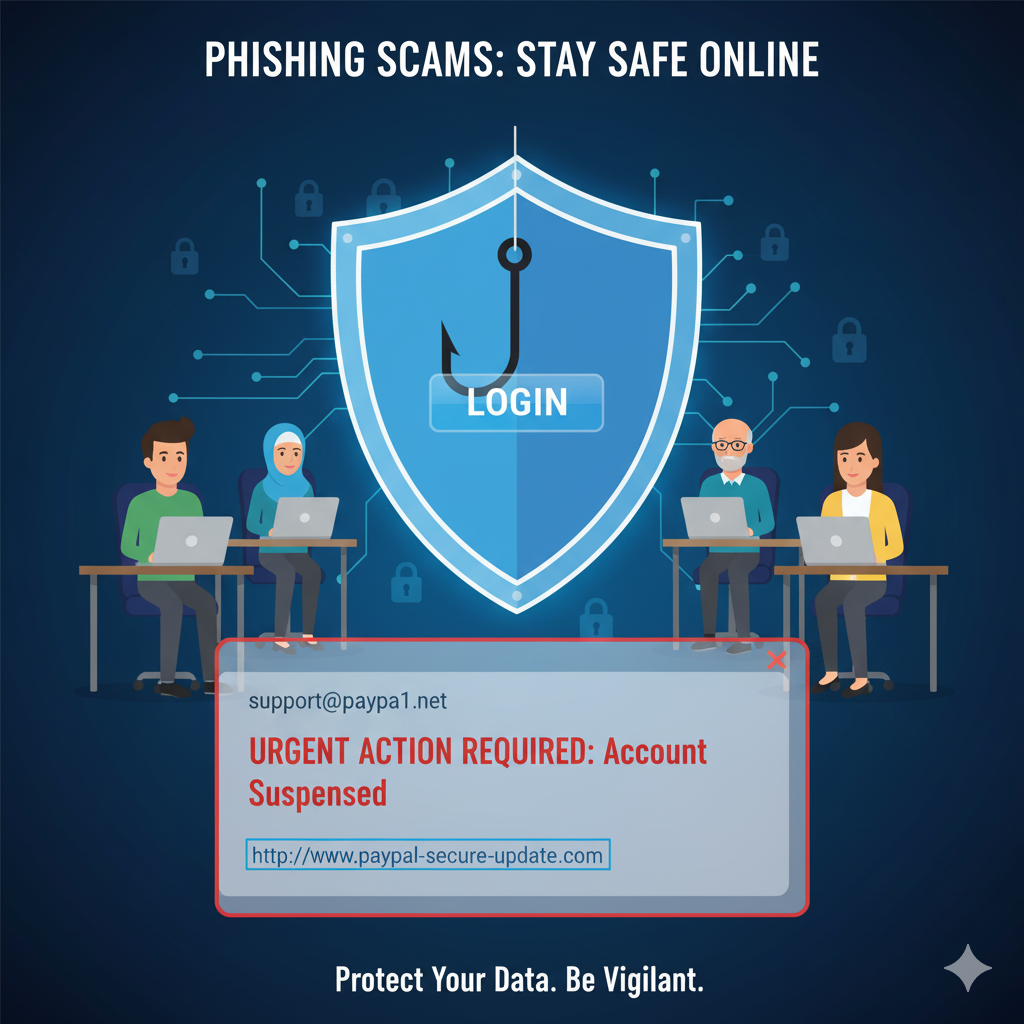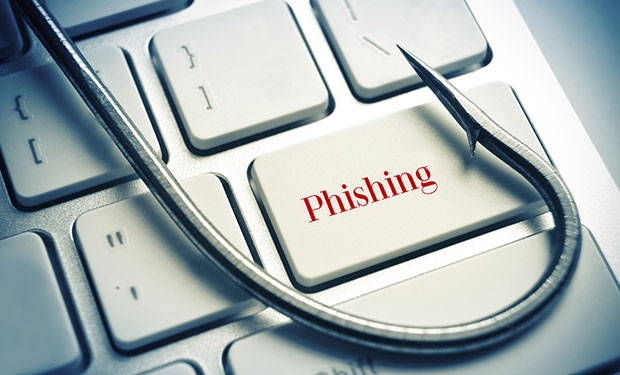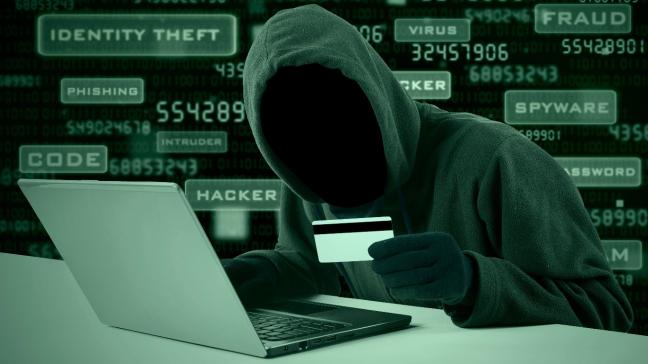Phishing Scams: The Ultimate Guide to Spotting and Avoiding Them in 2025
In our hyper-connected world, your personal information is one of your most valuable assets. Unfortunately, it’s also a prime target for cybercriminals who use deceptive tactics known as phishing scams to steal it. From your bank account details to your social media passwords, the fallout from a successful phishing attack can be devastating. As we navigate 2025, these scams are becoming more sophisticated, blending artificial intelligence with social engineering to create convincing traps for the unwary.
This ultimate guide will arm you with the knowledge you need to stay safe. We’ll break down exactly what is phishing, show you how to spot a phishing email and text message, and provide you with actionable steps to protect yourself from these pervasive digital threats.
What is Phishing? A Deep Dive into Digital Deception
At its core, phishing is a type of cybercrime where attackers impersonate a legitimate organization or person to trick individuals into revealing sensitive information. Think of it as fishing, but instead of a worm on a hook, the bait is a fraudulent email, text message, or phone call, and the target is your data.
The goal is almost always to obtain credentials (usernames and passwords), credit card numbers, bank account information, or other personally identifiable information (PII). Once scammers have this data, they can use it for identity theft, fraudulent purchases, or selling it on the dark web.
The Different Hooks in the Water: Types of Phishing Scams
While email is the most common vector, phishing has evolved across multiple platforms. Understanding the different types is the first step in building a strong defense.
- Email Phishing: This is the classic approach. Scammers send a mass email that appears to be from a well-known company—like your bank, a streaming service like Netflix, or a tech giant like Microsoft—claiming there’s an issue with your account that requires immediate action.
- Smishing (SMS Phishing): This involves fraudulent text messages. You might receive a text about a package delivery you weren’t expecting or a warning that your bank account has been locked. These messages contain a link designed to steal your information.
- Vishing (Voice Phishing): Here, scammers use phone calls. They might use a robocall or have a live person impersonate a representative from the IRS, tech support, or your bank to coax sensitive data from you over the phone.
- Spear Phishing: This is a highly targeted and dangerous form of phishing. Instead of a generic mass email, attackers research their target (an individual or a company) and craft a personalized message. For example, a spear phishing email might appear to come from your company’s HR department, using your name and referencing a specific internal project to gain your trust.
- Angler Phishing: This newer form of phishing takes place on social media. Scammers create fake customer support accounts for major brands. When a user complains publicly, the fake account swoops in, offering to help via direct message, where they then try to steal login credentials.
How to Spot a Phishing Email: Your Guide to Red Flags
Cybercriminals rely on you being busy, distracted, or panicked. They design their emails to bypass your critical thinking. However, if you know what to look for, the cracks in their facade become glaringly obvious. Here’s how to spot a phishing email.

1. The Sender’s Email Address is “Off”
This is one of the biggest giveaways. At first glance, the sender’s name might look legitimate, like “PayPal” or “Amazon Support.” But if you inspect the actual email address, you’ll often find inconsistencies.
- Legitimate:
support@paypal.com - Phishing:
support@paypa1.netorsecurity-update@paypal-customer-service.com
Scammers will often use subtle misspellings, add extra words, or use a completely different domain. Always hover your mouse over the sender’s name to reveal the full email address before trusting it.
2. The Email Creates a Sense of Urgency or Fear
Phishing scams thrive on emotion. They want you to act first and think later. Look for subject lines and content that use threatening or urgent language to scare you into clicking.
- “Your Account Has Been Suspended!”
- “Suspicious Login Attempt Detected – Secure Your Account Now”
- “Your Payment Has Been Declined – Update Your Information Within 24 Hours”
Legitimate companies rarely use high-pressure tactics like these. They understand that security requires careful consideration, not panicked clicks.
3. Poor Grammar and Spelling Mistakes
While AI is making phishing emails more polished, many still contain obvious grammatical errors, awkward phrasing, and spelling mistakes. Large, professional organizations have teams of editors and proofreaders who review their communications. An official email riddled with errors is a major red flag.
4. Suspicious Links and Attachments
The primary goal of a phishing email is to get you to click a link or open an attachment.
- Malicious Links: Never click a link without verifying it first. You can hover your mouse over the hyperlinked text to see the actual destination URL in the bottom corner of your browser. If the link text says
https://www.yourbank.com/loginbut the preview shows a strange, unrelated URL, it’s a scam. - Dangerous Attachments: Unsolicited emails with attachments should always be treated with extreme caution. These files, often disguised as invoices, receipts, or important documents (e.g.,
Invoice_12345.ziporUrgent_Report.pdf), can contain malware or ransomware that will infect your computer upon opening.
5. Generic Greetings
Legitimate companies you do business with will almost always address you by your name. Be wary of emails that use vague and impersonal greetings.
- Phishing: “Dear Valued Customer,” or “Hello Account Holder,”
- Legitimate: “Hello, John Smith,”
While some phishing attacks (like spear phishing) can be personalized, a generic greeting is a common sign of a broad, untargeted scam.
Email Scam Examples: Real-World Traps to Avoid
Seeing is believing. Here are a couple of common email scam examples that illustrate the tactics discussed above.
Example 1: The “Netflix Account Suspension” Scam
- Subject: Your Netflix membership is on hold
- Sender: Appears as “Netflix” but the email is from
support@net-flix-billing.com. - Body: The email claims there was an issue processing your last payment and your account is suspended. It uses the official Netflix logo and branding. It contains a large, red button that says “Restart Your Membership.”
- The Trap: Clicking the button takes you to a fake Netflix login page that looks identical to the real one. When you enter your email and password, the scammers steal your credentials. If you proceed, it will then ask for your credit card information to “update your billing details.”
Example 2: The “Microsoft Security Alert” Scam
- Subject: Unusual sign-in activity for Microsoft account
- Sender: Appears as “Microsoft account team” but the email is from
security-noreply@micr0soft.org. - Body: This email alerts you to a sign-in from an unrecognized location (e.g., Russia or China). It creates panic by suggesting a hacker has your password. It includes a link that says “Review recent activity.”
- The Trap: The link directs you to a fraudulent Microsoft login page. By entering your credentials, you hand them over to the criminals, potentially giving them access to your email, cloud storage (OneDrive), and other connected services.
Case Study: The 2023 MGM Resorts and Caesars Entertainment Phishing Campaigns
To understand the real-world impact of phishing, we need only look at the massive cyberattacks against MGM Resorts and Caesars Entertainment in late 2023. These weren’t low-level scams; they were sophisticated campaigns that crippled major corporations.
Attackers, believed to be from a group known as Scattered Spider, used vishing and spear phishing tactics. They reportedly called the companies’ IT help desks, impersonating employees who needed password resets. Through social engineering, they convinced the help desk staff to grant them access.
Once inside, the attackers deployed ransomware, encrypted systems, and stole massive amounts of customer data, including driver’s license and Social Security numbers. The attack cost MGM Resorts over $100 million in damages and caused widespread chaos, shutting down everything from hotel key cards to slot machines and ATMs. This high-profile case demonstrates that anyone, from an individual to a multi-billion dollar corporation, can be a target and that the initial point of failure is often a single person being deceived.
How to Protect Yourself: Prevention and Reporting
You don’t have to be a cybersecurity expert to defend against phishing scams. Adopting a few simple, consistent habits can dramatically reduce your risk.
Prevention Best Practices
- Think Before You Click: This is the golden rule. Always be skeptical of unsolicited emails or messages that ask for personal information or urge immediate action. Take a moment to analyze it for the red flags we’ve discussed.
- Enable Multi-Factor Authentication (MFA): MFA is one of the most effective defenses. It requires a second form of verification (like a code sent to your phone) in addition to your password. Even if a scammer steals your password, they won’t be able to access your account without the second factor.
- Go Directly to the Source: If you receive an email from your bank or another service, don’t click the links in the email. Instead, open a new browser window and type the company’s official website address yourself. Log in from there to check for any legitimate notifications.
- Keep Your Software Updated: Ensure your operating system, web browser, and antivirus software are always up-to-date. Updates often include security patches that protect against the latest threats and can help block malicious websites.
- Be Wary of Public Wi-Fi: Avoid accessing sensitive accounts (like online banking) when connected to public, unsecured Wi-Fi networks, as these can be a hunting ground for criminals trying to intercept your data.
What to Do If You’ve Been Phished
If you suspect you’ve fallen for a scam, act quickly to minimize the damage.
- Change Your Passwords: Immediately change the password for the compromised account. If you reuse that same password on other sites (a bad practice!), change those as well.
- Contact the Legitimate Organization: Call your bank or credit card company to report the fraud. They can freeze your accounts, block fraudulent charges, and issue you new cards.
- Scan Your Computer for Malware: Run a full scan with your antivirus software to ensure no malicious software was installed on your device.
- Report the Phishing Attempt: Forward phishing emails to the Anti-Phishing Working Group at
reportphishing@apwg.org. You can also report it to the Federal Trade Commission (FTC) atReportFraud.ftc.gov. Reporting helps authorities track and shut down these scams.
Frequently Asked Questions (FAQ) About Phishing Scams
Q1: Can I get phished by just opening an email?
Generally, no. Simply opening a standard phishing email is unlikely to compromise your device. The danger lies in clicking malicious links or downloading and opening infected attachments. However, some highly sophisticated emails could potentially exploit vulnerabilities in your email client’s image rendering, though this is rare. The safe practice is to avoid opening emails from unknown or suspicious senders altogether.
Q2: What is the most common type of phishing scam?
The most common type of phishing scam remains deceptive email phishing, often impersonating large, trusted brands like Microsoft, Amazon, Google, or major banks. These scams are successful because they cast a wide net and play on the everyday services millions of people use.
Q3: How can I check if a link is safe without clicking on it?
You can use a link scanner tool. Websites like VirusTotal, Norton Safe Web, and Google’s Safe Browsing site status checker allow you to copy and paste a URL to see if it’s flagged as malicious. Additionally, simply hovering your mouse cursor over the link in an email will reveal the true destination URL at the bottom of your browser window.
Q4: What’s the difference between phishing and spam?
Spam is essentially unsolicited junk email, usually advertising a product or service. While annoying, it’s not always malicious. Phishing, on the other hand, is always malicious. It is a fraudulent attempt to trick you into revealing sensitive information by impersonating a trustworthy entity. All phishing emails are spam, but not all spam is phishing.
Q5: My email provider has a spam filter. Isn’t that enough to protect me?
While modern spam filters are very effective at catching a large percentage of phishing emails, they are not foolproof. Cybercriminals are constantly developing new techniques to bypass these filters. You should view your spam filter as your first line of defense, but your own vigilance and skepticism are the crucial last line of defense.

!["Your Package Has a Problem": Inside the Delivery Smishing Scams Flooding Your Phone 3 A person's hand holding a white smartphone, which displays a fraudulent text message impersonating USPS. The message reads 'USPS: Your package has an unpaid shipping fee of $.85. Please update your details here to avoid delays: [Malicious-Link.delivery-update.net]'. In the background, out of focus, are stacked cardboard delivery boxes, a laptop, and a credit card, emphasizing the context of online shopping and potential fraud.](https://www.fraudswatch.com/wp-content/uploads/2025/10/Smartphone-Displaying-a-USPS-Smishing-Scam-Text-768x768.png)



